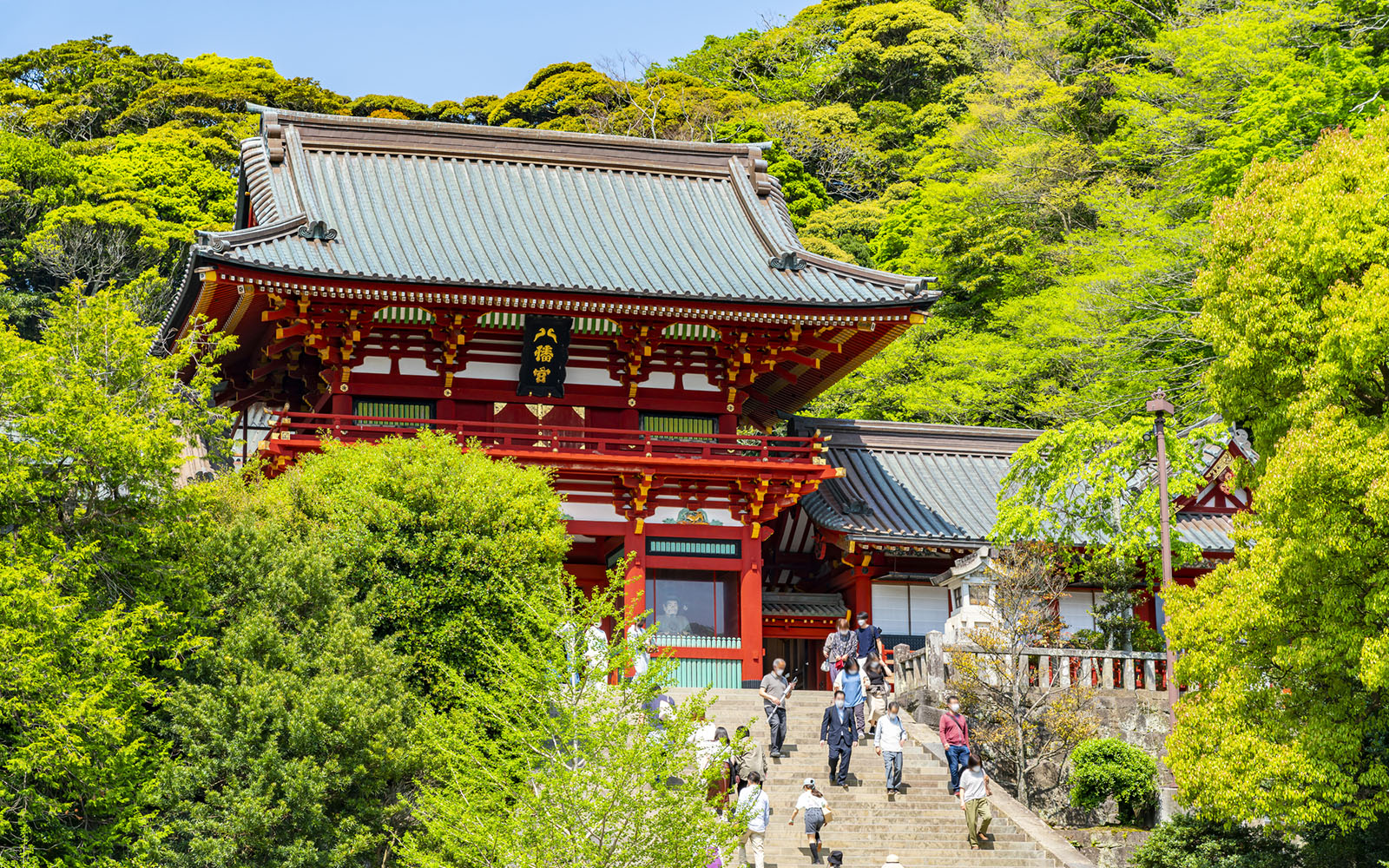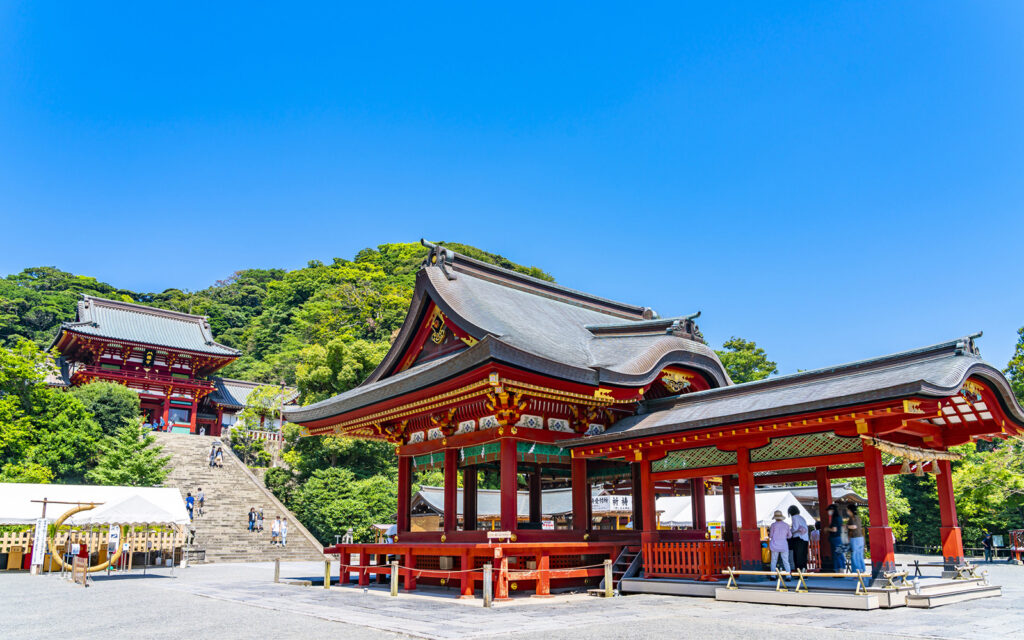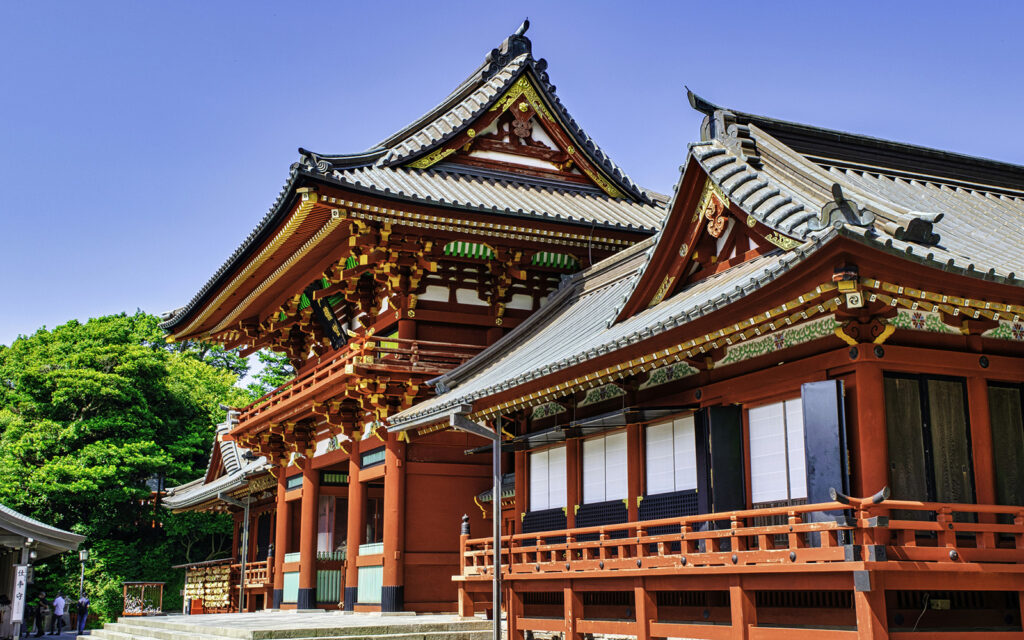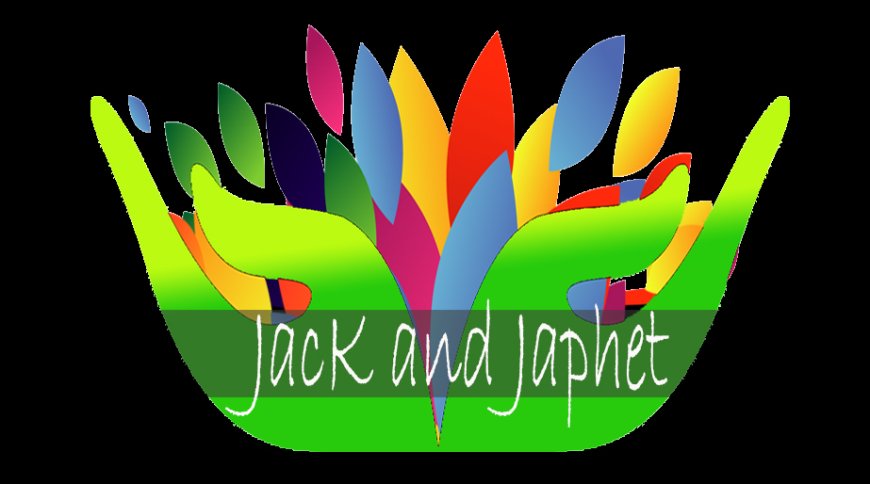Tsurugaoka Hachimangu Shrine


Tsurugaoka Hachimangu Shrine is a centerpiece of Kamakura‘s history. Established during the Kamakura Shogunate, the first military government of the Kamakura period (1185-1333), it serves as a powerful symbol of the samurai‘s legacy and the region’s spiritual heritage. Founded over 800 years ago, it remains one of Japan’s most visited Shinto shrines. Today, it draws millions of visitors annually to appreciate its religious and historical significance and enjoy the seasonal beauty.
Tsurugaoka Hachimangu Shrine
 Photo by: PIXTA/ t.sakai
Photo by: PIXTA/ t.sakaiMinamoto no Yoriyoshi, one of the early figures of the Minamoto clan, established Tsurugaoka Hachimangu Shrine in 1063. He dedicated this shrine to Hachiman, the deity of war and victory, as a way of expressing gratitude for his military successes. In 1180, Minamoto no Yoritomo moved the shrine to its current location. He was a descendant of Yoriyoshi and became the first shogun of the Kamakura Shogunate. This strategic location marked Kamakura as the heart of political power in Japan during the Kamakura period. Tsurugaoka Hachimangu Shrine is more than just a place to worship; it represents the samurai culture and embodies ideals of honor, bravery, and loyalty.
Architectural Highlights
 Photo by: PIXTA/ Masa
Photo by: PIXTA/ MasaWhen visitors walk through the Tsurugaoka Hachimangu Shrine, they see an array of striking structures. The most notable is the Main Shrine (Honden), which honors Hachiman, Emperor Ojin and Empress Jingu. Along the path, visitors encounter two serene ponds (Genji and Heike) that represent the Minamoto and Taira clans, reflecting the historical feud that shaped the era.
There are two museums on site. The Kamakura Museum of National Treasures displays about 4,800 artifacts, including swords, sculptures, paintings and documents from the Kamakura and Muromachi eras. The Museum of Modern Art showcases modern and contemporary art, as well as architecture, within a peaceful natural setting.
Seasonal Festivals
 Photo by: PIXTA/ calcium01
Photo by: PIXTA/ calcium01Tsurugaoka Hachimangu hosts numerous ceremonies and festivals throughout the year. Spring brings cherry blossoms along Dankazura (the iconic raised walkway), creating a pink tunnel leading to the shrine.
The most famous event is Yabusame, a traditional horseback archery ceremony held in the early autumn. In this event, riders dress like samurai and shoot arrows while riding on horseback in the shrine grounds. It has taken place every September since the time of Yoritomo.
During June and July, visitors can see blooming lotus and hydrangeas along the paths. The Bonbori Lantern Festival, held in early August, features beautiful, glowing lanterns, making it a picturesque event. The Tanabata festival in July allows visitors to write wishes on colorful paper and hang them on bamboo. The lesser-known Firefly Festival, held in June, features the release of fireflies and traditional dances, celebrating Japan’s respect for nature and the beauty of light.






